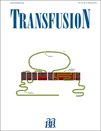Evaluation of a new cell separator for collection of peripheral blood CD34+ progenitor cells in pediatric patients
Abstract
BACKGROUND: This study was conducted to evaluate the performance of the COM.TEC cell separator (Fresenius HemoCare GmbH) for collecting CD34+ cells in pediatric patients who were intended to have autologous peripheral blood progenitor cell transplantation, with respect to collection variables, prediction power of CD34+ cell yield, and influence on donors.
STUDY DESIGN AND METHODS: A total of 26 pediatric solid tumor patients who received mobilization chemotherapy and granulocyte–colony-stimulating factor underwent CD34+ cell collection (n = 96) using the COM.TEC auto mononuclear cell (MNC) program. Patients were divided into a neuroblastoma (NBL) group and a brain tumor group according to the intensity of prior chemotherapy regimens. The collection variables, cellular variables of leukapheresis products, and the peripheral blood cell counts of patients were compared with those acquired using the COBE Spectra (GambroBCT). The CD34+ cell collection efficiency (CE) and the percentage ratios of actual to predicted CD34+ cell yield indicating prediction power were analyzed.
RESULTS: Using the COM.TEC auto MNC program, the processing rate was higher and the product volume was smaller (p < 0.05) than those of the COBE Spectra. Platelet (PLT) reduction in peripheral blood and PLT contamination of the products were significantly lower (p < 0.01). The median CE was less than 60% in both patient groups (50.0 and 48.4%, respectively). The actual collected CD34+ cell yields were medians of 66.9 and 76.1% of the predicted values in NBL group and brain tumor group, respectively.
CONCLUSION: PBPC collections by the COM.TEC cell separator had advantages of high processing rate, low product volume, and low contamination by PLTs of product. Low PLT loss was observed in pediatric patients who need to collect autologous PBPCs. However, applying CD34+ cell yield prediction was not practical for prospective scheduling of the next collection. More specified data need to be accumulated for more accurate prediction of CD34+ cell yield in pediatric patients.




